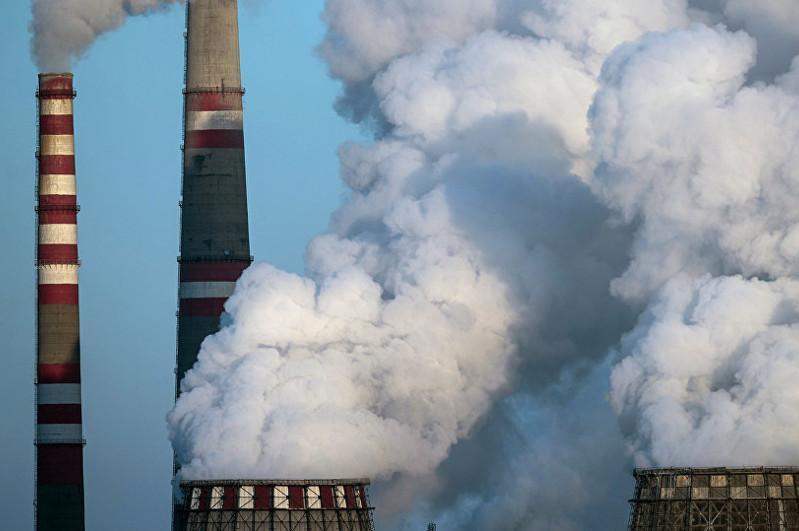There is little data about air pollution in Kazakhstan, though what does exist shows dangerous air quality levels. Researchers are working on measurements tools to give a more accurate picture of the issue and figure out what can be done.
Although pollution has long been a topic of conversation in Kazakhstan, air quality only recently became a key issue for Kazakhstani activists. The main obstacle to starting that conversation is the lack of a reliable, accessible and transparent data.
Want more Central Asia in your inbox? Subscribe to our newsletter here.
However, the existing data, as patchy as it is, still shows a concerning picture: at one point in winter 2021, Kazakhstan was in third position in the World Air Quality Index, a frequently updated ranking of countries from most to least polluted. In autumn and winter Nur-Sultan, the capital, is frequently in the top ten of cities with the worst air quality in the world. Another major Kazakhstani city, Almaty, was also described having “unhealthy” air in March 2021.
Despite this lack of data, the problem of air quality in Kazakhstan is still apparent. The source of the problem has been subject for debate until recently, with environmental scientists and activists emphasising the problem of low-quality coal-fired combined heat and power plants (CHPs) and government representatives largely blaming vehicles, shifting the focus to individual responsibility.
Dr Nassiba Baimatova is an environmental scientist from Kazakhstan who, alongside other researchers, is developing more robust air pollution measurement tools in Almaty. As a place with high levels of pollution but also lively debates about solutions, Almaty presents an interesting case for looking at cleaner energy transition in developing countries.
Less traffic during lockdown
There has been less traffic in Almaty during the first COVID-related quarantine, offering researchers a chance to examine how the role of vehicles in the air pollution problem in Almaty has been overestimated.
“The results show that even the lack of transportation cannot lead to a significant reduction in the level of pollution, since the nature of air pollution in Almaty city is complex and several major emission sources like CHP plants and the private sector dominate the pollution profile throughout the city,” Baimatova says. Analyzing the sources of the problem, she emphasises the role of low-quality coal both at power plants and in the private sector, on top of emissions from improperly maintained vehicles.
“The main problems of high air pollution in Almaty is associated with the combustion of low-quality coal at thermal power plants and heating in the private sector, as well as emissions from motor vehicles, that is low quality of motor fuel, obsolete cars and the lack of exhaust quality control systems,” she explains. “Plus, there are no reliable data sources – monitoring systems are either outdated or provide an insufficient reliable data for a real assessment of the state of air pollution.”
The problem of coal
The issue of coal and the air pollution it creates has been debated in Almaty and in the rest of the Kazakhstan for a while. A petition for modernization of combined heat and power plants and transition to a cleaner gas fuel has gathered more than 5000 signatures. This has led to an opportunity, as the gradual transition of combined heat and power plants from coal to a natural gas-based option has entered the discussion.
The concrete direction is still yet to be determined, said Baimatova, since some of the options proposed by the local government consider a combined source of energy, due to an increase in tariffs that comes with transitioning to natural gas-fired CHP plants. However, Baimatova maintains that a natural gas-only option is necessary to address the air quality issue: “To solve environmental problems, it is necessary to consider “natural gas only” options, which would allow for the complete elimination of ash and sulfur dioxide emissions, an ash dump, which is also a significant source of emissions.”
Read more: Kyrgyzstan: why Bishkek’s air quality is so poor
“According to the calculations presented, in an option 4 [‘natural gas only’] the tariff is only 4% higher than in the ‘coal’ option. However, in the ‘natural gas’ option, environmental benefits are obvious, barring any loopholes or data manipulation,” she adds.
Kazakhstan has also started a process of transitioning to natural gas-based CHP plants in Nur-Sultan. Two coal-fired CHP plants are to be modernized by the end of 2021, but the precise date of households switching to natural gas is yet to be determined, because the infrastructure isn’t ready and prices are yet to be set.
Beyond Almaty and Nur-Sultan
The problem of low air quality in the rest of Kazakhstan is no less pervasive and complex than in Almaty and Nur-Sultan. For example, in Ust-Kamenogorsk, a city in the east of the country that at times ranks as having the worst air quality, the pollution caused by CHP plants using low-quality coal is exacerbated by the pollution from several other industries’ plants. Both are hard to tackle, since the city has no easy access to natural gas reserves and environmental standards for plants are not transparent and can easily be manipulated.
The problem of air pollution in Kazakhstan is multifaceted and, if not dealt with on time, could have multiple harmful effects on the country’s future, Baimatova concludes. “In Kazakhstan, polluted air leads to 10,064 premature deaths per year, according to WHO data (from 2010). The economic cost of premature deaths due to air pollution in the country is 29.2 billion US dollars per year, or 9.3% of the GDP.
“Studies carried out assessed damage only to public health, without considering such indirect effects as damage to trees, wildlife, buildings, cars, agricultural yields, tourism development, as well as a decrease in investment attractiveness and the negative effect of migration. Air pollution can lead to significant economic losses due to the so-called “brain drain” effect.”
Nazira Kozhanova
For more news and analysis from Central Asia, follow us on Twitter, Facebook, Telegram, Linkedin or Instagram.
 Breathing space: air quality and energy transition in Kazakhstan
Breathing space: air quality and energy transition in Kazakhstan 




hackthatwork, 2021-09-14
Pakistan, which has an average PM2.5 concentration of 74.27, is the second-most contaminated nation in the world. For most of 2019, AQI levels in Punjab were consistently among the “near unhealthy” or “extremely unhealthy” ratings and even reached as high as 484. Pakistan is experiencing increasing pollution from the increasing number of road vehicles, the loss of trees on a wide scale, smoke from brick kilns and steel mills, and waste burning.
Reply